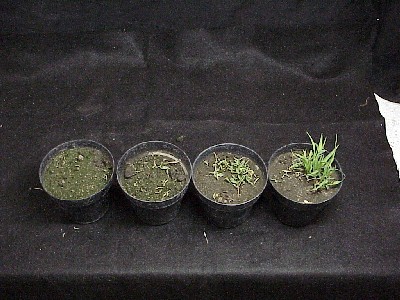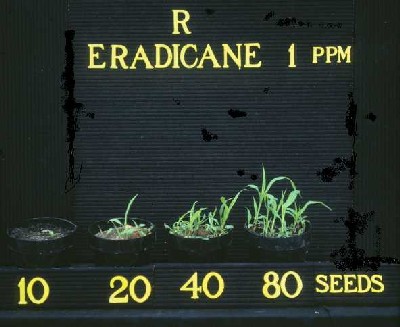Chapter 14: Applied Herbicide Physiology and Movement
14.7 Effects of Weed Densities and Soil Properties
While soil-applied herbicides are applied to the soil and in some respects we are treating the soil, it is actually the weed that is being treated. The soil in this case is merely the medium supporting the weed. Soil texture, organic matter and pH influence the bioavailability of soil applied herbicides. Application rates of many soil applied herbicides vary with soil properties in order to provide a constant quantity of biologically active herbicide to interact with the weed. Be sure to follow label guidelines to maximize your success.

Even with herbicide rates adjusted to compensate for soil properties there is a weed density effect on herbicide activity, with herbicide efficacy (success) decreasing with increasing weed density. The more weeds present, the greater the amount of herbicide required for the same level of activity. Essentially, with higher weed populations, there is less herbicide per plant available. In a sense, there is competition between plants for the available herbicide even though this competition is harmful to the plant. Careful experiments provide insight into this relationship. In these next two images, you can see these effects on pots with different numbers of weed seeds treated with the same rate of herbicide.

This effect of plant density on herbicide activity demonstrated in greenhouse experiments is also observed in the field. Typically, weed infestations are not uniform across agricultural fields. Rather some areas of fields have higher weed densities than other areas. However, weed management practices tend to be applied uniformly across fields. Rates of soil-applied herbicides may be adjusted for soil properties to provide a constant amount of biologically available herbicide, but are rarely adjusted based on expected weed density. As a result, the herbicide has a differential effect on weed control across the field with efficacy greatest in areas of low weed density and lowest in areas of high weed density. This contributes to perpetuating the patchy distribution of weeds.